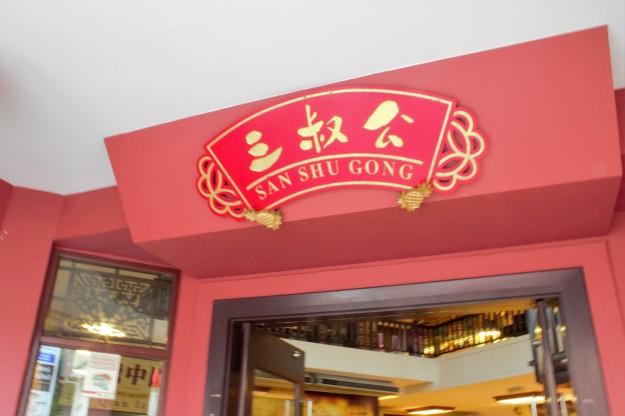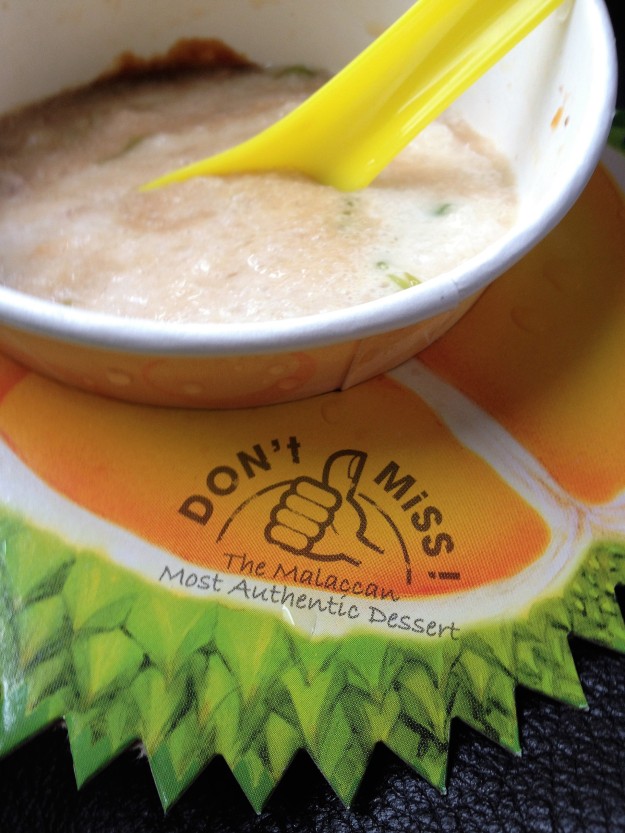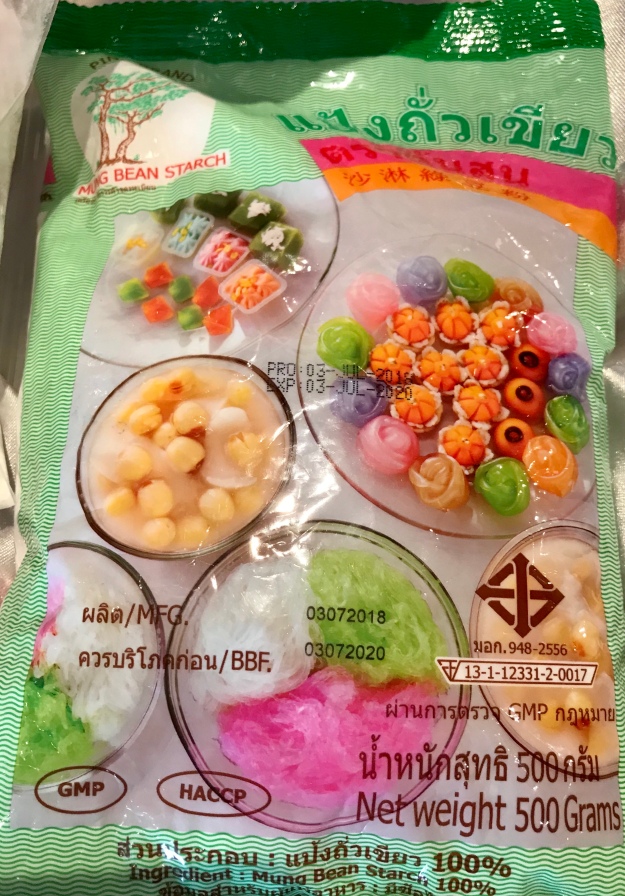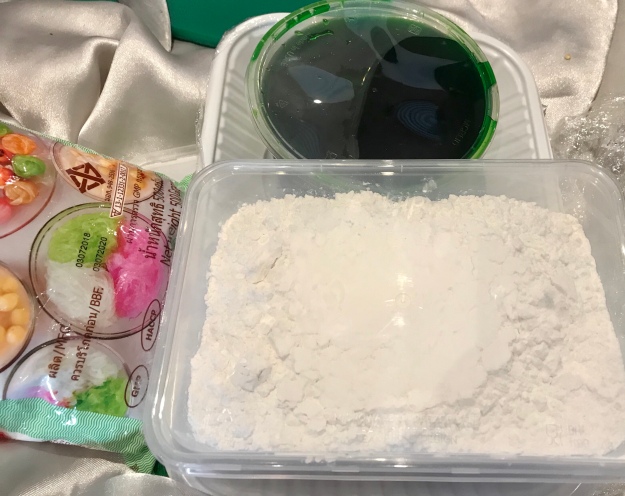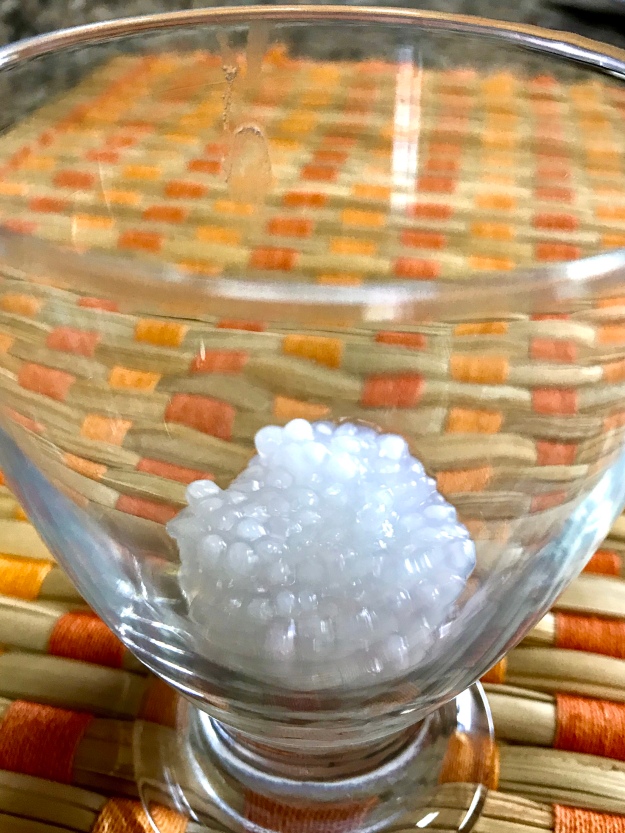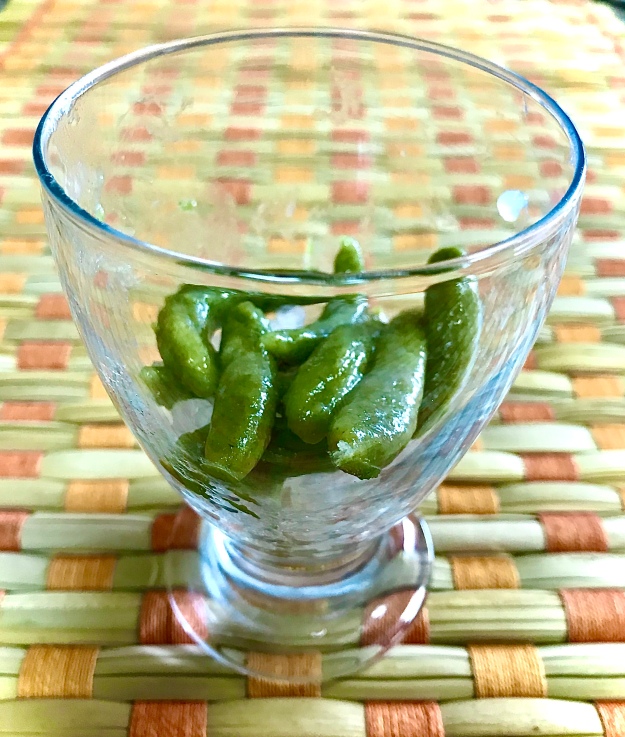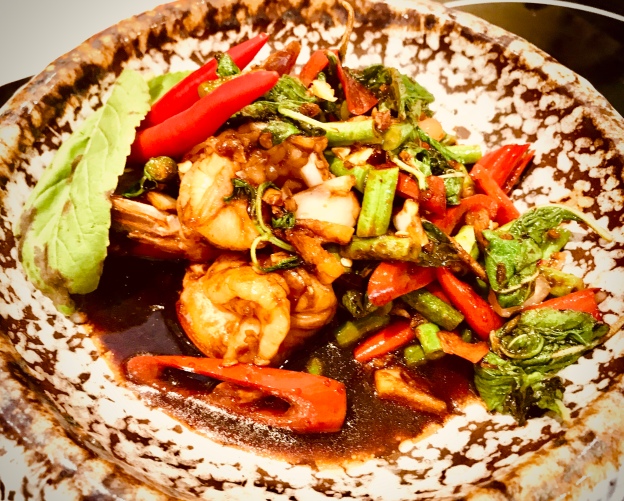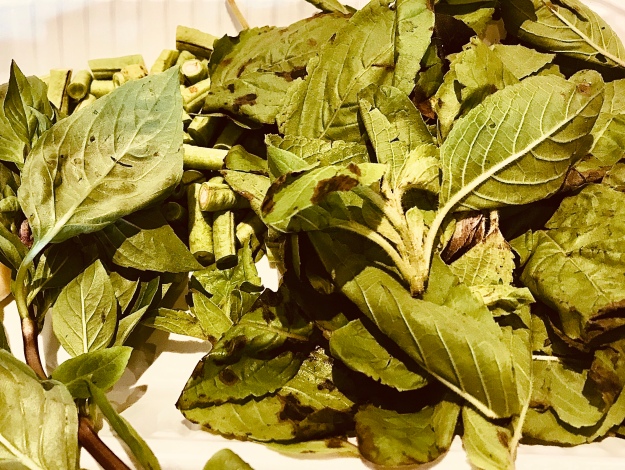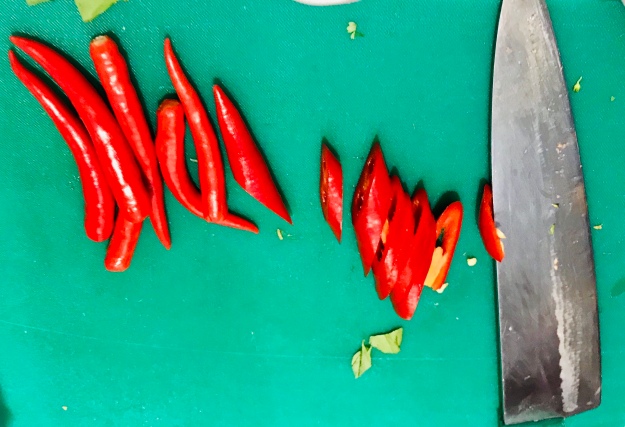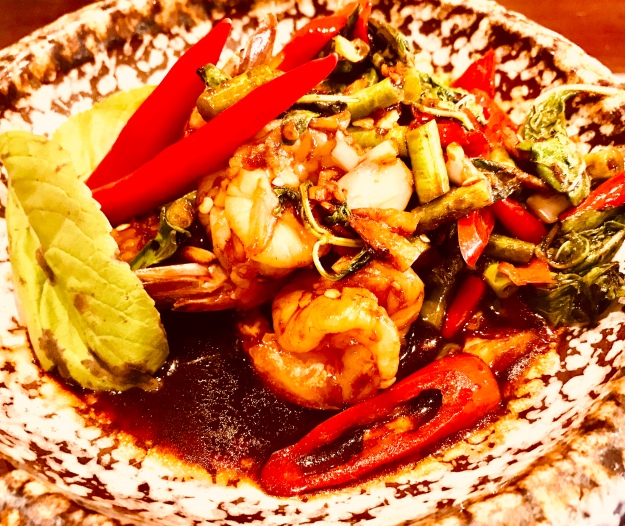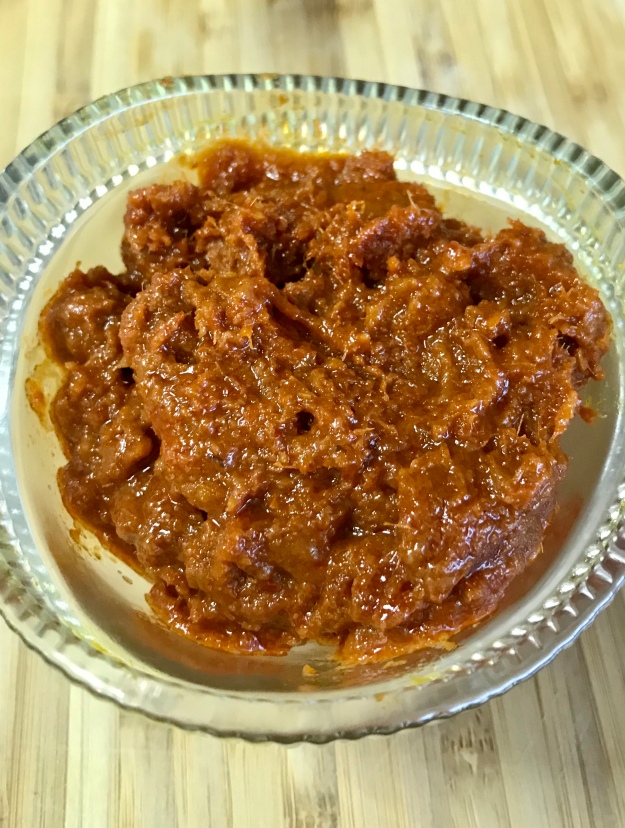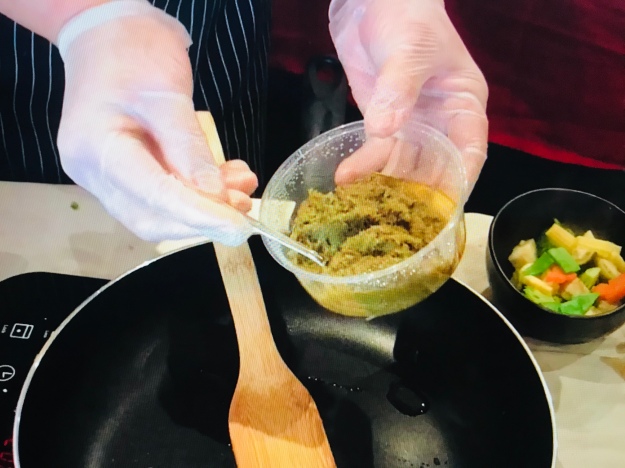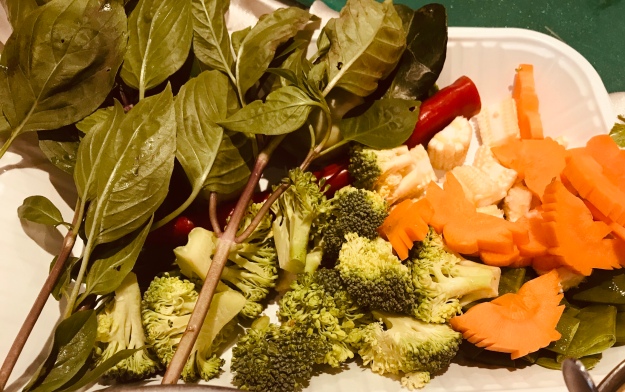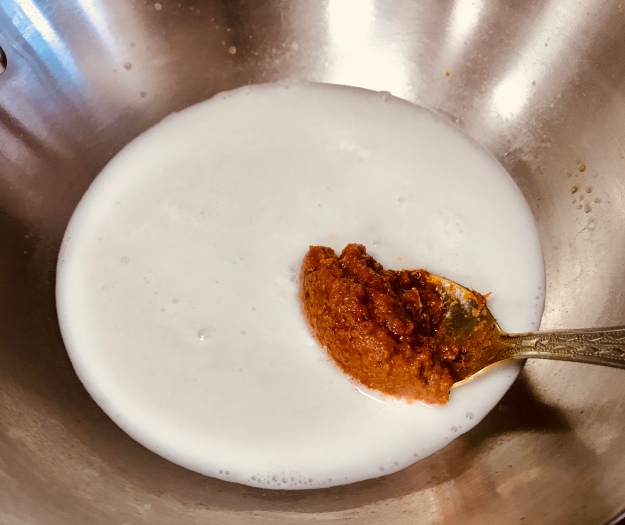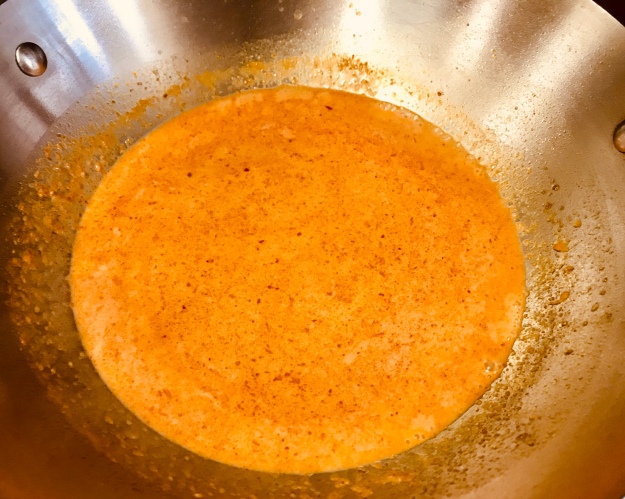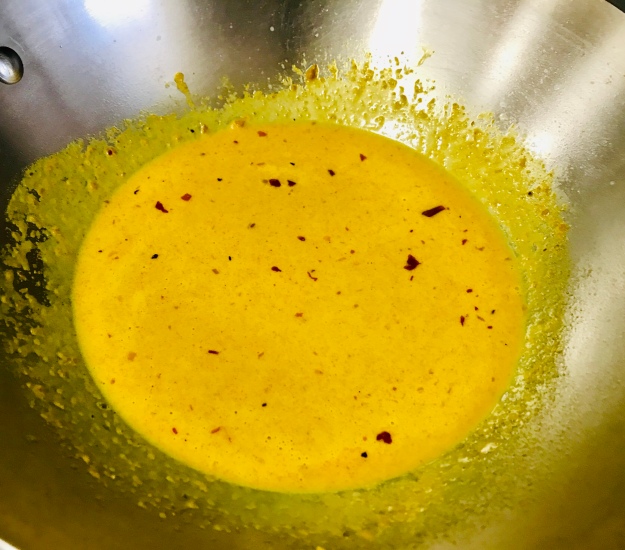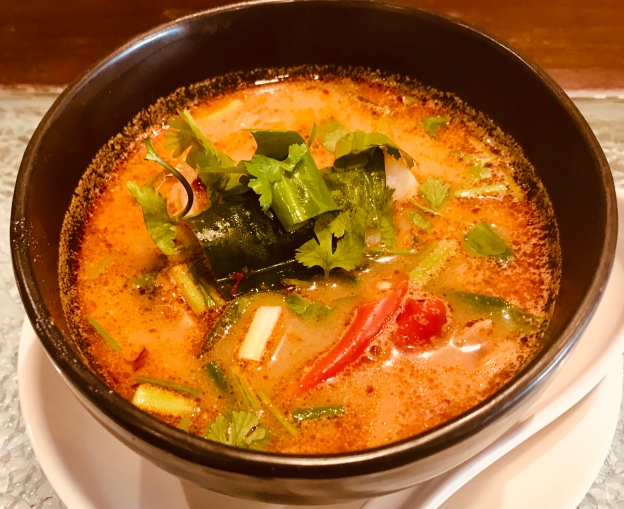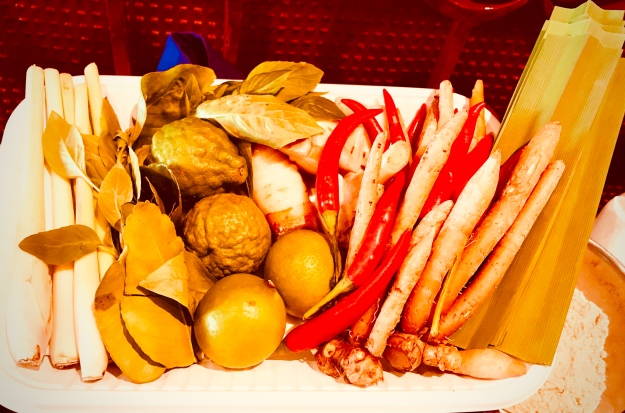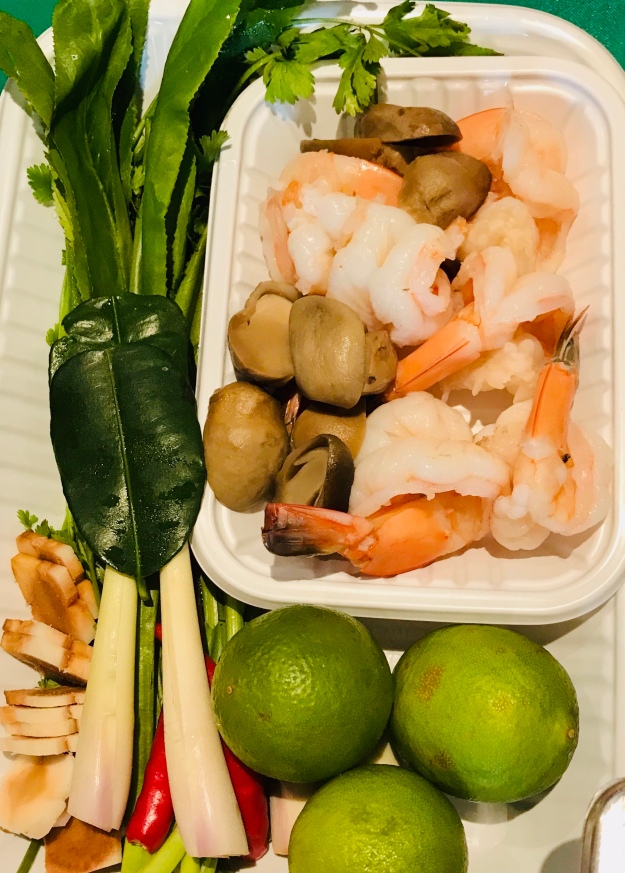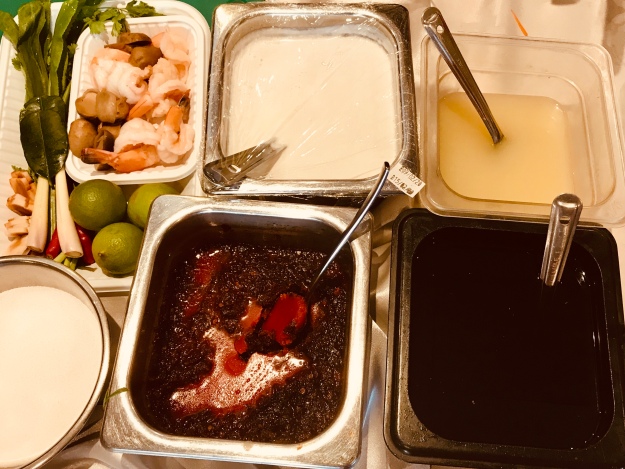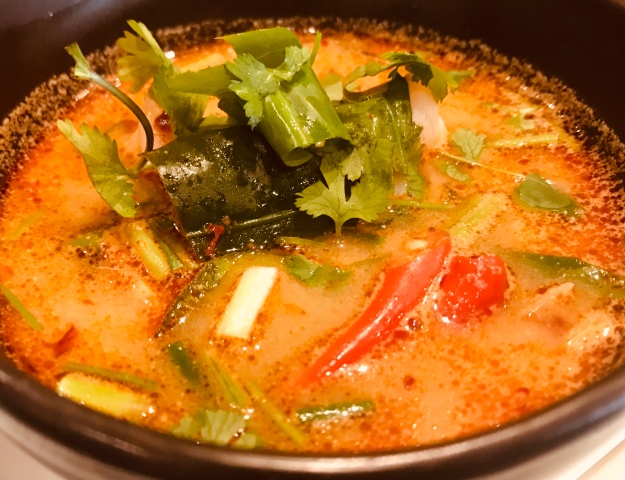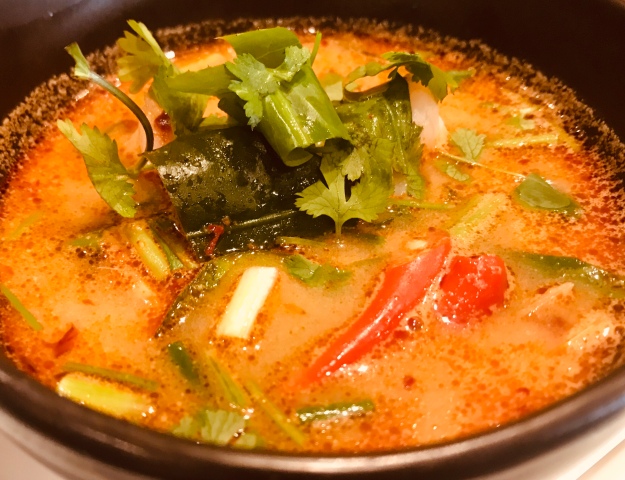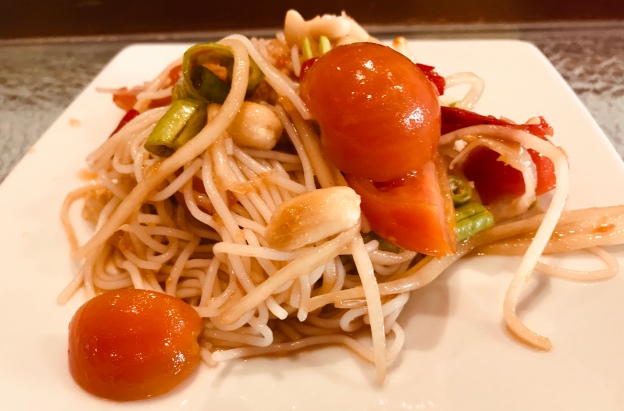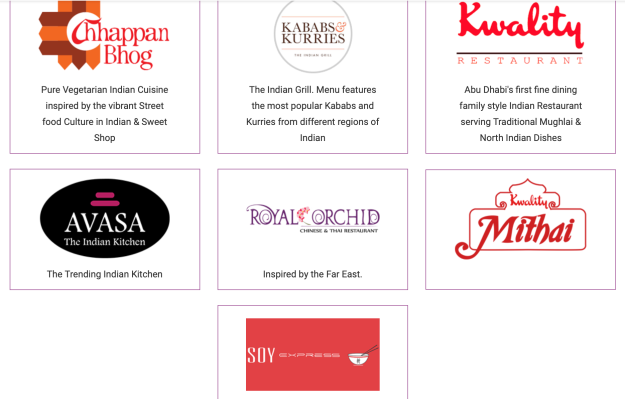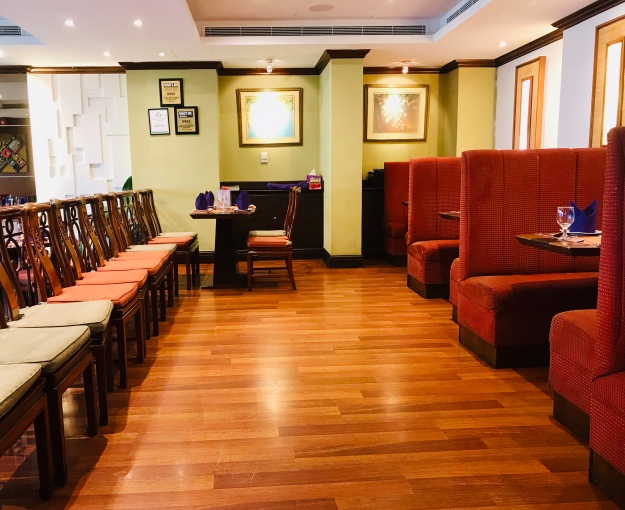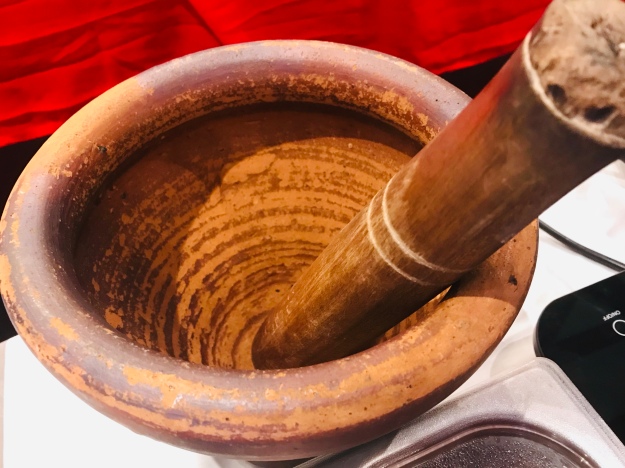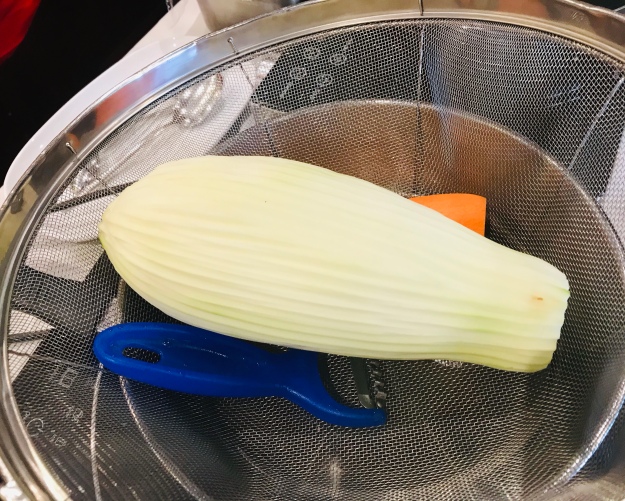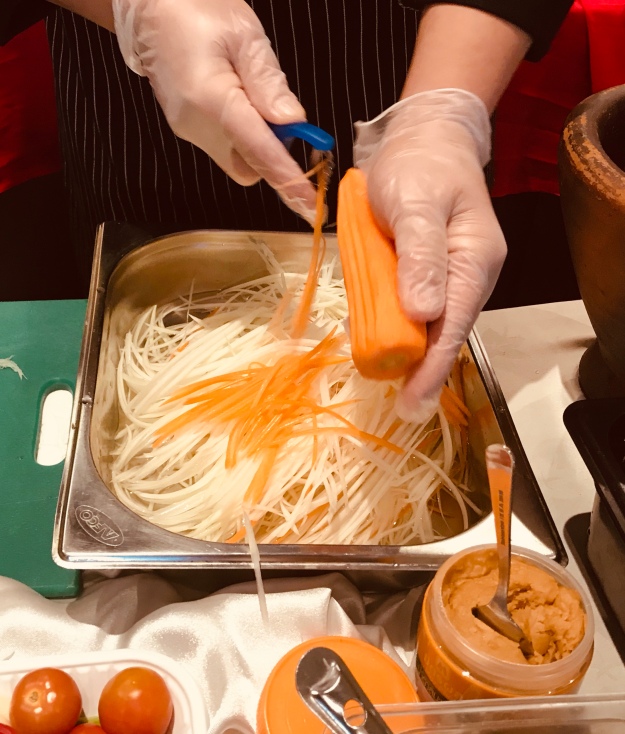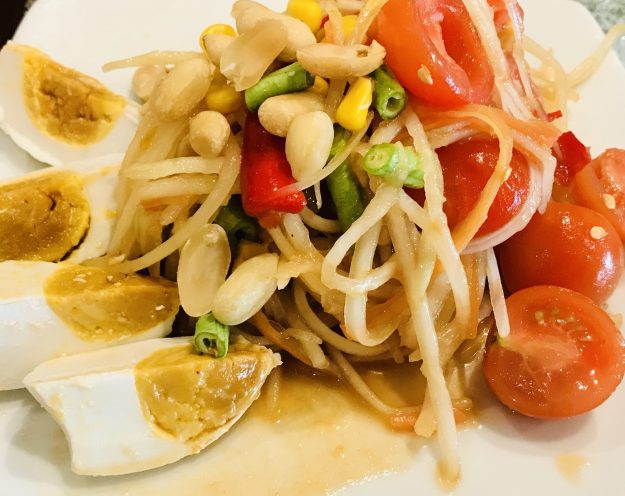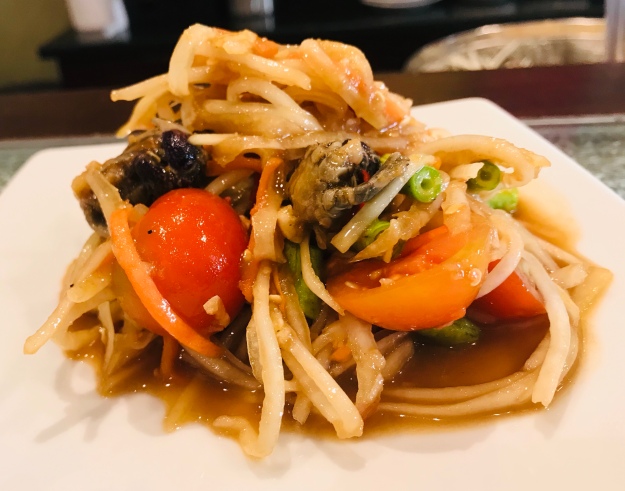So, here we are, at the end of the workshops at Royal Orchid – Chinese and Thai Restaurant in Abu Dhabi. A salad, soup, curry, stir fry and dessert – a beautiful journey in an elaborate platter. These demonstrations have not only rekindled my interest in the cuisines of south east Asia, but also helped me re-visit my cooking experiences of authentic Cambodian curries, in Phnom Penh, several years ago.
Thank You Royal Orchid and Chef Vitug for the beautiful culinary experience.
What I have understood in the past decade of my life, is – my mind is not as simple to operate as my smart phone. But someone, who has studied the working of our brain, and the ways it synchronises our accumulated memories, with multiple other traversing thoughts, must have disigned the working of the Smart Phone. I’ll explain why.
The Phone has become the World in our Hands. The countless number of applications, we have installed, has made our lives easy as well as complicated. That you’d agree with me. Every time, we are upto some important job on the phone, there are various other things – be it mails, messages, app notifications, advertisements and what not, or even a virus- that pop up, every now and then. This disturbance isn’t very complicated, there is always the magical touch of our hands, that can slide away the pop up menace.
Now, my memory and my smart phone. Like those pop-up messages, I have these non-stop nostalgic memories, wobbling around me. Unlike the magic of the finger, that works for my phone, the mind doesn’t understand the nuance of swiping off those memories popping up. It looks like an eternal task.
Philosophies done- the success of nostalgia is this post.
The next workshop, and the last of Thai Cuisine was a Dessert. As mentioned previously, with the luxury of having my own choice to learn, I requested Chendol.
Why Chendol?
As I have mentioned in my earlier posts, the combination of jaggery and coconut milk in the desserts or payasams of Tamilnadu, is ‘Heavenly’ to me. I believe, there is no equivalent payasam to an Adai Pradhaman or Paasi Paruppu Payasam.
With this pre-conceived notion in mind, and God sent luxury of travelling to several countries in south east Asia, when I saw the concoction of cane sugar/palm sugar and coconut milk- with several indigenous ingredients in Cambodia, Malaysia and Indonesia….. what else would I be left with – than drenching myself in the cuisinical connection of these countries and my roots in Tamilnadu!!
Chendol is basically made with green rice flour jelly, pandan leaves, palm sugar and coconut milk – served with shaved ice. Called Lot in Cambodia, Dawet in Indonesia and Lod Chong in Thailand, there are other refined versions of Chendol too. These versions are created with different ingredients – as in –
- Naab Vaam in Cambodia (there are other similar desserts and names)
- Bubur Kacang Hijau in Indonesia (served hot)
Chendol is a versatile creation – it comes across as a street food, cool summer drink as well as an elite dessert.
Cendol has been declared a Malaysian heritage food by the Malaysian Department of National Heritage. https://en.wikipedia.org/wiki/Cendol
Before moving on to the making of Lod Chong/ Thai version of Chendol, let me share what I tried and relished in Cambodia, Indonesia and Malaysia – the different versions of my Tamil Payasam – in their different Chendol Avatars.
I. Cambodia’s Naab Vaam
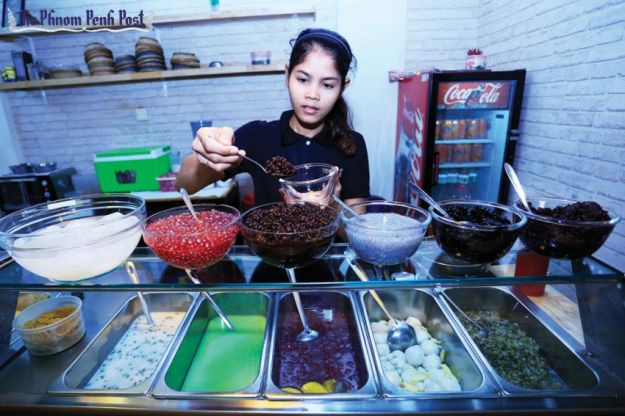
While we were in Cambodia, we used to visit a Restaurant called, Tonle Bassac (from now on TB), at Preah Sihanouk Street. The place would be a buzzing station for tourist groups, hence making the place, quite uncontrollably crowded. Yet, the speciality of TB, was their Lunch Buffet, which was a culmination of cuisines of a few south east asian neighbours. Among the impressive live kitchen and a vast spread, my favourite was their dessert. Leaving aside the usual pastries and fruits in the dessert section, the Cambodian variation of Chendol was very impressive, on the first visit.
First, when I saw green mung, red mung, tapioca pearls, jellies in different colours, soaked basil seeds in several bowls – I was surprised. Then I watched people combine their favourites among the above, with palm sugar syrup, coconut cream and crushed ice.
What I tried first needs no guess. Green mung, palm sugar syrup, coconut cream and crushed ice. It tasted exactly like Paasi Paruppu Payasam. While Payasam is always a very hot affair, here the dessert was cold with crushed ice. Seemed quite interesting and refreshing.
Every weekend I would crave to try different variations of the same dessert. “Thanks ‘TONLE BASSAC’!”, for introducing me to the Khmer version of my favourite Payasam.
Since, I couldn’t find pictures of the dessert from restaurant TB, I searched the web. The combined dessert is called by several names- with different combinations. What seemed almost similar to what I had enjoyed in TB, was Naab Vaam.
a. Blogger Cindy Her’s post on Naab Vaam showed it all. Additionally, she had also published a separate post on making of green chendol.
the best step by step procedure to make Chendol- http://chawjcreations.com/2019/01/02/cendol-for-naab-vaam/
b. As a street food as well a comfort dessert, an article in Phnom Penh Post – showcased the delicacy in its elaborate best – from a son who learnt the art from his mother.
Read the article – https://www.phnompenhpost.com/post-weekend/just-desserts-catering-only-khmer-sweet-tooths
II. Durian Chendol in Malaysia
Durian Chendol
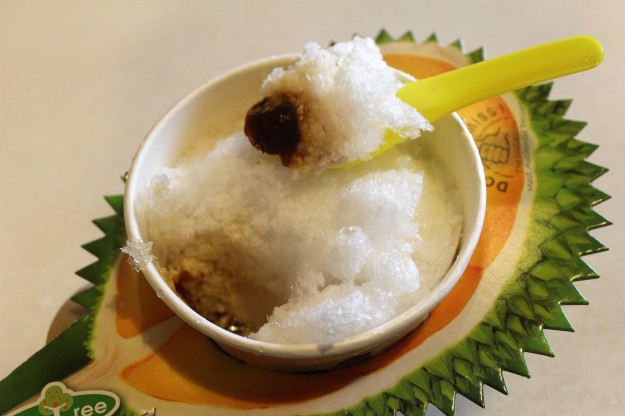
Next, when we travelled to Malaysia, we spent a day in Melaka/Malacca.
We started the day, by visiting the Dutch Square in Malacca, then, proceeded to one of the authentic Tamil restaurants in Little India for lunch. Post lunch, we had a relaxed stroll in Jonker Street.
After a long walk, when we were tired – we found San Shu Gong – a Chinese shop, well stocked with numerous Chinese products. What was the main cause of interest comes next-
This shop had a coffee/juice shop, which also served one of south east asia’s most sought after desserts – Chendol. This version of chendol was with a twist – it was the Durian Chendol. Durian, might be the most dreaded fruit worldwide, for its distinctive odour. I was courageous enough to try the Durian version. Sorry Durian Lovers!!! That was not meant for me – my tongue still doesn’t forget the strange strong flavour.
Thus, the Durian version of Chendol, has become a distinctive memory for my taste buds too.
III. Bubur Kacang Hijau of Indonesia

The flavour of Chendol, was going to travel with me. In our trip to Indonesia, we spent the first four days in Bali, before visiting the Historical Temples of Yogyakarta. The elaborate breakfast was scrumptious. There was this extremely delicious Sweet – steaming hot coconut milk-palm sugar-sweet potatoes-jack fruit-green mung – the ones that I remember right….with fragrant Pandan Leaves.
Again, my favourite Payasam in another version….this time, in another South East Asian country.
Now, tell me- why should Chendol and its versions come striking- at regular intervals – strong enough to push me down in the soft cushions of Nostalgia so often??
Further, such fond memories associated with Jaggery, Palm Sugar and Coconut Milk from childhood (with Payasams made by Amma), stretched towards the years in Cambodia- that I spent exploring South East Asian Cuisine and History – seemed popping back again, now in Abu Dhabi.
This time, I didn’t try to swipe off the striking Nostalgia.
In the workshop at the Royal Orchid’s, to end with a Dessert, I chose Chendol – but wanted to see how the green mung noodles went into the delicacy. The Thai version of Chendol is called Lod Chong.
Thai Lod Chong/ Green Mung Chendol
the dish’s name describes what happens when you push hot and gooey dough through small holes and how it leaks out as elongated worm-like noodles. “Lod Chong” in Thai means exactly that, “leaking and escaping through the opening“. https://thaifoodmaster.com/thai_traditional_dessert_recipes/

Chef Vitug, made the special Chendol recipe suitable for home cooks, without the Thai noodle press. The press is a simple steal press, available in Thai department stores.
Here, Chef made mung bean strips floured with rice flour, which would later be cooked in hot water.
green mung bean starch available in stores in thai section… and the strips
ingredients to make Chendol –
- mung bean strips made with pandan leaf extract
- coconut milk – pandan scented and candle scented
- glutenous rice flour
- palm sugar syrup
- pandan leaves
This could be the easiest way to make Chendol at home, with no compromise in flavour and taste.
So much so, I could make my own Chendol version at home, after the workshop.
My Chendol
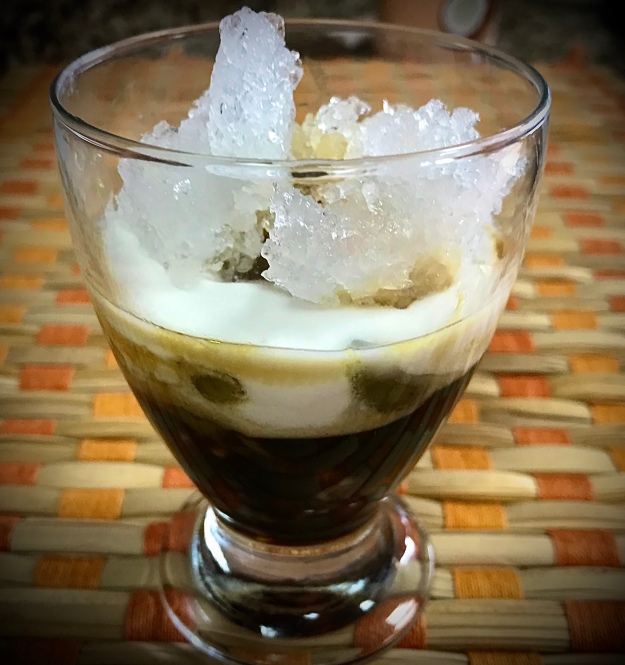
Left – Chendol with Sago / right – Chendol with green mung and sago with coconut milk
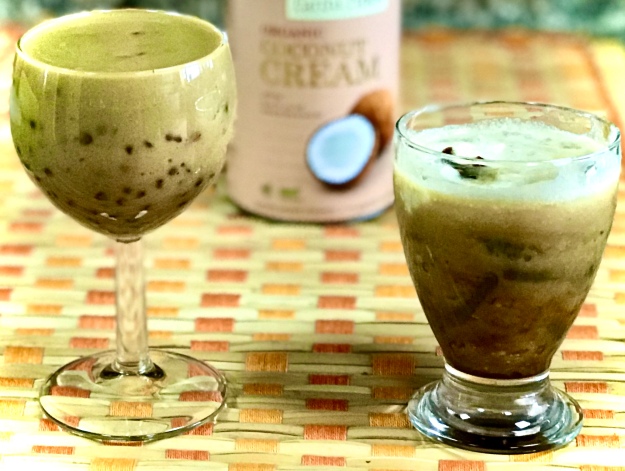
Making Chendol ..
Method of Preparation
- Make Pandan extract –
Blend Pandanus leaves with water. Strain the pure green liquid.
2. Make Chendol strips
Take Green Mung starch; mix with a little salt and pandanus extract and enough water to make a stiff dough
Roll into a thin sheet. Cut strips
Coat the strips with rice flour
3. Palm Sugar Syrup
Melt palm sugar in water. Place a tied bunch of Pandan leaves in the liquid. Make a semi thick syrup. Keep aside.
4. Heat up Coconut milk .
5. In a bowl or tall glass as preferred, place bean strips
photo represents my version at home..
6. Add palm sugar syrup
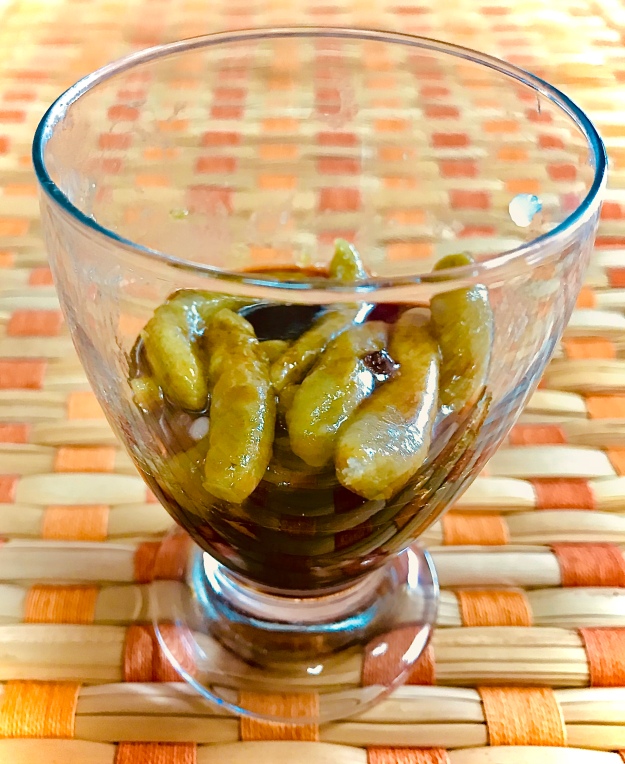
7. Pour in coconut milk/cream

8. Add crushed ice or ice cubes
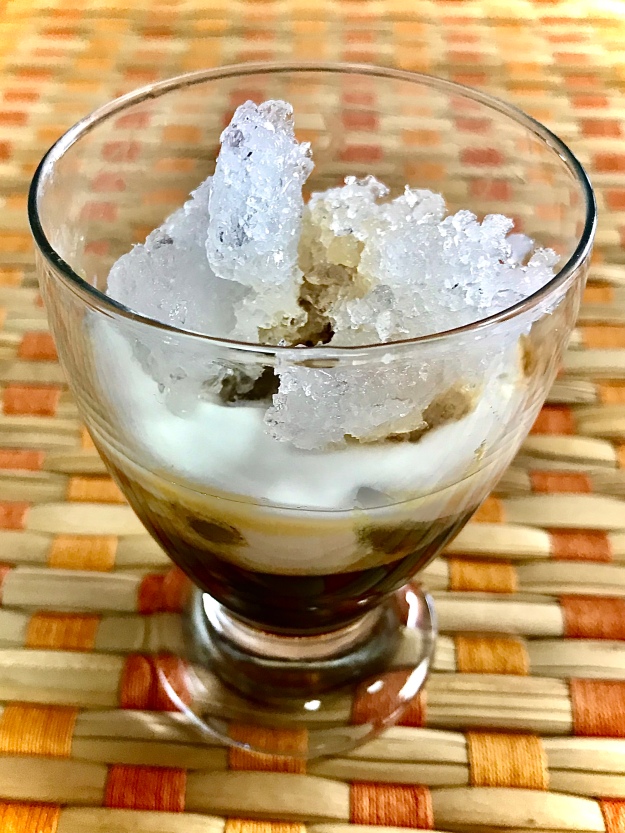
9. Enjoy the dessert.

10. Feel free to add sago, cooked green or red mung, jack fruit, banana, soaked basil seeds or cooked and sweetened red rice too.


